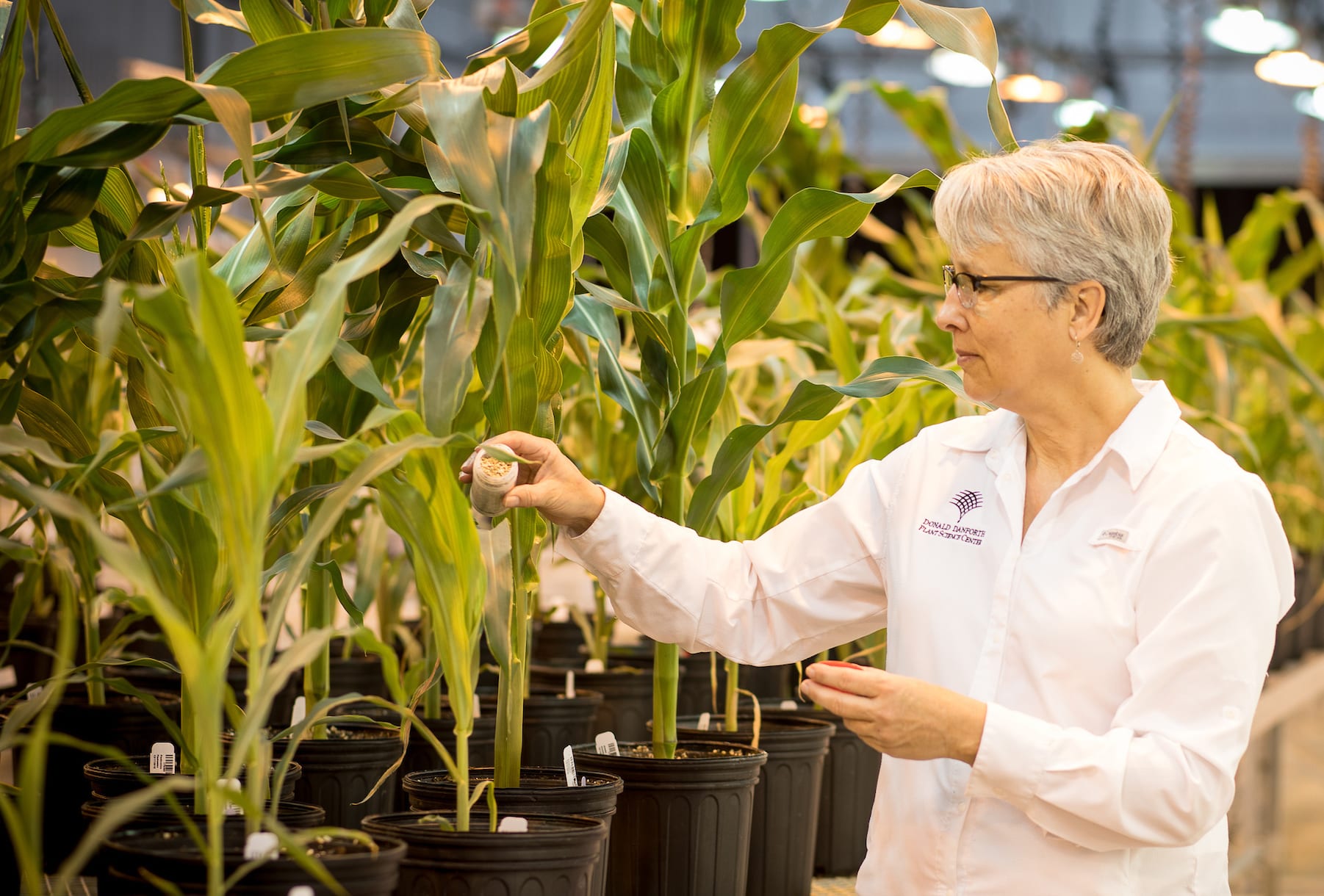When horticulturist Sally Fabbri was growing up, her older brother kept an insect collection. “He would drag me all around the wilds of the Allentown suburbs looking for specimens. I guess I’ve always liked insects too,” she says.
Today, working as a crop specialist in the Danforth Center greenhouse, Fabbri has developed that early interest into a passion for beneficial biocontrol agents (BCAs) – helpful insects and arachnids – with impressive results. By applying BCAs to greenhouse plants, the Danforth Center was able to reduce reliance on traditional sprayed pesticides over the last three years by 64 percent (in some cases, by as much as 86 percent). And destructive pests are found in lower quantities than ever before.

What Are BCAs?
Biocontrol agents include a variety of mostly insect and arachnid species that prey on the destructive aphids, thrips, and mites that wreak havoc in the greenhouse. Their use is harnessing nature to keep pests in check. BCAs can include species of wasps, lacewings, beetles, nematodes, and pirate bugs, but the most commonly used beneficial organisms at the Danforth Center are predatory mites, such as Neoseiulus cucumeris, N. californicus, and Stratiolaelaps scimitus. Hardly household names, but this tiny trio of terrors is voracious, eating all the thrips and mites they can find.
Spider mites were once the biggest pest in the greenhouse, but we have barely sprayed for them since the introduction of beneficial bugs,” says Fabbri. “In fact, we have to routinely replenish our predatory mite stock because they run out of food.
How Does It Work?
After scouting for pests, greenhouse staff submit requests for beneficial insect orders. Fabbri then purchases combinations of beneficial insects every two weeks from Beneficial Insectary of Redding, CA, and other vendors. Horticulturists disperse the tiny critters in a variety of ways, from simply opening a canister to sprinkling them "like parmesan cheese" onto potting soil to tagging a plant with an egg card. The plants are usually misted first to enhance stickiness.

The majority of the good bugs require replacement, owing to short lifespans, annual plantings, and inadequate food (a sign of successful pest control). However, some beneficial insects reproduce in-house and repopulate. The minute pirate bug Orius insidiosus, which eats thrips and small aphids, can sustain a population in the greenhouse. The Danforth Center only needs to buy a small amount to supplement their numbers.
Once we stopped spraying pesticides, sometimes beneficial insects started showing up on their own,” adds Fabbri. “For example, parasitic wasps that prey on aphids just appeared one day.”
Why It Matters
While beneficial insects cost more than pesticides on the invoice, a thorough accounting is closer to parity. Pesticide use is dangerous: it requires regular licensing for staff, investment in gear (Tyvek suits, respirators, masks, gloves, etc.), and hazardous waste disposal. There is diminished access when pesticides are used: humans cannot safely enter affected areas for up to 12 hours. And there is collateral damage: pesticides can kill helpful insects and can damage or stunt plants. While pesticides remain important to greenhouse management, minimizing their use through sustainable techniques like beneficial insects is better for the plants, the people around them, and the planet.